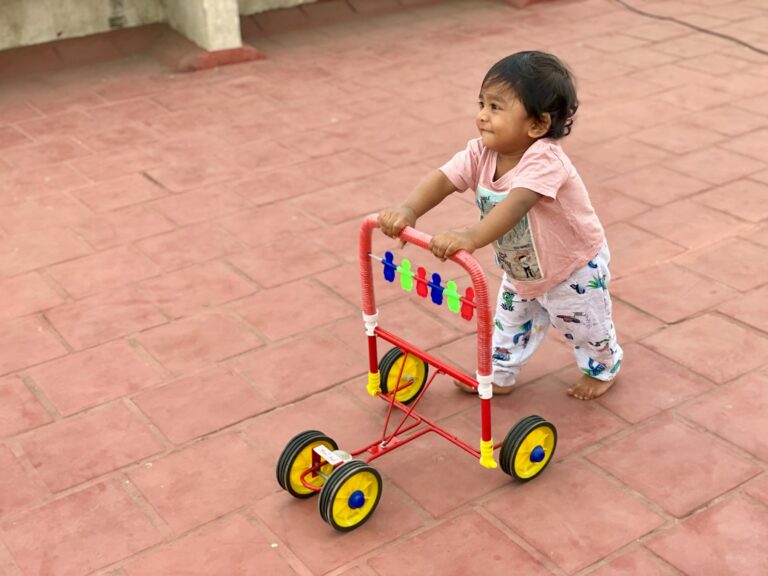The journey of Breastfeeding and weaning unveils a cascade of questions: How long to continue exclusive breastfeeding? When do you know your baby is ready for solids? Should weaning be gentle, or can it flow quickly, if life circumstances demand? Parents often find themselves at this delicate crossroads—torn between tradition, evolving medical guidelines, daily routines, work commitments, and the intricate signals their child projects. Feeding choices brim with emotional weight and practical dilemmas. Here, clarity emerges: responsive Breastfeeding and weaning are far from a one-size-fits-all road. The goal is nurturing growth, safeguarding comfort, and fostering confidence, whatever your family’s unique story might be. In this guide, you’ll find a nuanced look at the science, the medical facts, the practical steps, and the emotional wisdom for a smooth Breastfeeding and weaning experience.
The essence of breastfeeding: nutrients, immunity, and bonding
When it comes to newborn nutrition, Breastfeeding and weaning share an interplay that can feel almost poetic. Breastfeeding means much more than nourishment: every feed delivers antibodies (the biological bodyguards fighting viruses and bacteria), hormones, growth factors, and enzymes finely tuned to your baby’s exact age and needs. Breast milk’s dynamic composition—ever-changing, adjusting with each growth spurt and illness—fills babies with optimal proteins, healthy fats, vitamins (especially vitamin A, D and B12), and minerals like calcium and iron that are indispensable for brain growth and immune resilience.
How do you know breastfeeding is “working”? Listen and look. A deep latch—baby’s mouth wide, lips flanged, chin pressed into the breast—ensures milk transfer. Audible swallowing, contented sighs, relaxed hands, and softened breasts after feeding signal effective intake. Watch for six to eight wet diapers per day; track steady weight gain. If you feel a tingling sensation or gentle tightening in your breast soon after baby latches, that’s the famed let-down reflex—milk flow, triggered by the hormone oxytocin.
For mothers, the hormonal dance of breastfeeding confers notable health benefits. The act can reduce the risk of breast cancer and ovarian cancer, and it assists the uterus in returning to pre-pregnancy size. The natural spacing of pregnancies (known as the lactational amenorrhea method) is another well-documented effect.
But what if challenges arise? Latching troubles, sore nipples, engorgement, or blocked ducts can disrupt the flow—quite literally. Reminder: relief is usually quick if adjustments are made. A change in hold (try the cradle hold, cross-cradle, or football hold), breaking suction gently with your finger, or shortening sessions can help. Mastitis—an infection with symptoms like pain, redness, and fever—warrants prompt consultation with a paediatrician or lactation consultant. Community breastfeeding support groups and trusted helplines offer tailored strategies for diverse needs, from relactation tips to advice on breast pumps and milk storage.
Weaning: the shift from breastfeeding to broader horizons
The transition known as weaning evokes a tapestry of emotions and strategies. Sometimes, weaning enters the scene when a parent returns to work, or a child’s curiosity about family food becomes irresistible. At other times, health, lifestyle, or practical necessity prompt the shift. Weaning can be sudden or gradual—but most experts and parents find gentle, flexible pacing to be far more harmonious.
Typically, weaning begins close to six months, dovetailing with the baby’s readiness signals—sitting upright with support, watching family meals with rapt attention, chewing motions, and decreasing tongue-thrust (the automatic reflex pushing food out of the mouth). The journey might last two weeks or sprawl across several months, shaped by temperament, family priorities, and routine.
Several approaches are possible:
- Continue night feeds as a comfort ritual while replacing certain day-time breastfeeds with bottles or solid food.
- Opt for partial weaning—for example, preserving morning and evening breastfeeds but swapping out others.
- Embark on complete transition, substituting all breastfeeds with formula or milk alternatives depending on your child’s age.
Whichever the pace, tune into your child. Resist abruptness—dropping one feed every 3–4 days helps both body and emotions adjust. Introducing a midday bottle (filled with expressed breast milk or formula) or solid snack can become the gateway. Gradually reduce the number of direct feeds, always observing your child’s nap rhythm and hunger cues.
A snug, supportive bra, warm compress, and expressing a small volume if you’re uncomfortable can ease the typical fullness or engorgement as supply decreases. If your baby hesitates with the bottle, sometimes another caregiver (grandparent or babysitter) offering feeds in a new environment (not your usual nursing spot) may work wonders.
The many faces of weaning: stepwise guidance
Breastfeeding and weaning embody adaptability. Here is a stepwise path:
- Start with replacing a midday feed, ideally when your baby is least attached. Distract with play, offer soothing cuddles, or go for a walk immediately after.
- After several days, drop another feed, leaving the emotionally significant morning or nighttime feeds for last.
- Switch up routines so the usual cues to breastfeed (your lap, a certain chair) aren’t as available.
- For bottle refusal, experiment with cup feeding or spoon feeding—sometimes the novelty is key.
- Introduce a variety of complementary foods (iron-fortified cereals, pureed meats, mashed beans, colourful fruits, and vegetables). Offer one new food every three to five days to observe any allergic responses (rash, vomiting, facial swelling).
- At 12 months, whole cow’s milk (or, if needed, unsweetened fortified soy drink) can safely enter the mix—served in a cup, to promote independence and protect budding teeth.
Is baby-led weaning better? Medical evidence suggests both parent-led and baby-led styles foster healthy development, as long as safety and nutrition are prioritised. Baby-led approaches—allowing your child to self-feed, reduce nursing gradually, and explore textures—often make for enthusiastic eaters. Parent-led routines, where certain feeds are intentionally dropped, provide reassurance when structure is needed. There is no perfect template; balance, observation, and empathy win the day.
Nutrition in the evolution from breast to bowl
During Breastfeeding and weaning, nutritional focus gently shifts from exclusive reliance on breast milk to an increasingly diverse plate. Yet, in this process, breast milk or formula remains a cornerstone until at least the first birthday. Medical guidelines emphasise introducing iron-rich foods at weaning onset: pureed meats, iron-fortified grains, and lentil daals maintain iron stores and stave off anaemia. Variety is your friend—rotating pulses, vegetables, root crops, and proteins, layer by layer, encourages healthy gut bacteria and broadens taste preferences.
Transitioning from purees to mashed, then to soft finger foods, should always be paced according to your child’s readiness. Watch closely for interest in self-feeding, improved hand-eye coordination, and the ability to gum or chew. Water should become the go-to beverage post one year, with milk as a nutritional add-on, not a substitute for solids. If in doubt about portions, nutrients, or allergies, professional advice from a dietitian or paediatrician can clear the clouds.
The emotional dance of breastfeeding and weaning
Breastfeeding and weaning are rarely just physical transitions—they’re woven with powerful, sometimes conflicting feelings. Babies may cling, protest, show extra fussiness, or regress in sleep during times of change. These behaviours are their way of asking for reassurance, comfort, and attention.
To ease this period:
- Create new comforting rituals—bedtime stories, gentle rocking, familiar songs.
- Let your baby express emotions; acknowledge their feelings with calm presence.
- Special one-to-one play sessions (without distractions from screens or chores) can reinforce security.
- Partners or caregivers stepping in to provide comfort can smooth the passage—maintaining connection, sharing the nurturing load.
Parents too can experience a medley of emotions—relief, nostalgia, joy, or even a twinge of sadness. It is entirely natural. Building a personalised support system of friends, partner, elders, and parental groups bridges these emotional tides.
Adapting breastfeeding and weaning for special circumstances
Situations sometimes demand flexibility outside the usual:
- Medical or abrupt weaning—required due to medication, maternal illness, or another pregnancy—calls for additional self-care. Express enough breast milk to relieve pressure, prioritise skin-to-skin time for soothing, and seek prompt medical advice on safe milk alternatives.
- Preterm or medically vulnerable infants: Tread slowly. Track nutrition closely with your paediatric team and tailor the pace of change.
- Return to work: Expressing milk for later bottle feeds, using insulated storage, arranging dedicated lactation breaks, and preserving direct breastfeeding upon return home all help sustain both milk supply and emotional connection.
- Tandem feeding (nursing an infant and a toddler): If health circumstances allow, this is possible but boundaries and maternal comfort should guide decision-making.
Cultural customs often shape Breastfeeding and weaning, too—many families introduce foods, celebrate transitions, or prolong breastfeeding according to traditions handed down through generations. Community wisdom can be comforting, as long as medical safety is never compromised.
Practical support and resources for families
Successful Breastfeeding and weaning draw strength from a robust support ecosystem:
- Certified lactation consultants, paediatricians, and nutritionists offer tailored solutions—be it about milk supply, special diets, or persistent feeding hurdles.
- Local parenting circles and international communities like La Leche League provide camaraderie and practical strategies.
- Open, ongoing dialogue with all caregivers ensures routines are clear and transitions consistent.
- Prioritise your own well-being—rest, balanced meals, realistic goals, and emotional pauses if setbacks arise. Sometimes, illness, teething, or unexpected resistance demand a slower pace or a reset. It’s all part of a healthy adjustment.
Key Takeaways
- Breastfeeding and weaning unfold uniquely for each family: trust that gradual, attuned transitions nurture the healthiest outcome.
- Nutritious, iron-rich complementary foods and continued milk (breast milk or formula) underpin steady growth, especially in the first year.
- Most feeding challenges respond to gentle adaptation, clear communication, and professional insight.
- Patience, self-compassion, and a flexible mindset support parents and children alike through these changes.
- Resources and professional care are always on hand to empower families. For more personalised health tips and free children’s health questionnaires, download the application Heloa.
Questions Parents Ask
What are the signs my baby is ready to start weaning?
Readiness for weaning can emerge in subtle ways. Babies often begin sitting upright with little help, reach for foods at family meals, and demonstrate robust head and neck control. Chewing motions and the curiosity to taste, munch, or mouth food from the spoon or their fingers are good green lights. If these signs appear, you may begin experimenting with small, safe tastes of solids—letting your child guide the rhythm without rushing.
When is the ideal moment to stop breastfeeding?
There’s no single timeline inscribed in stone. The optimal timing for the end of breastfeeding reflects your child’s cues—less interest in nursing, more engagement with food—and your own comfort or life situation. Many medical guidelines encourage continued breastfeeding until two years or longer. Some children reduce feeds on their own; others need more support. The emotional comfort and ongoing benefits for both mother and child merit consideration at every step.
How to make weaning less stressful for the baby?
Patience weaves peace into the weaning process. Introduce new foods one by one, in a calm space. Keep routines familiar—add cuddles, offer a favourite toy, shift the focus with gentle games or a short stroll. Accept some resistance or extra clinginess as normal. If a specific method seems difficult (bottle refusal, food aversion), try alternatives or call in another trusted caregiver for support. Gentle, attentive responses smooth the transition.
What if my baby refuses the bottle or solids?
Change, for some babies, is unsettling. Trying different bottle types, adjusting temperatures, or even waiting a few days before re-introduction can work. Alternate feeding positions, or have another family member try the feed. With solids, start with soft, mild flavours and textures—mashed banana, dal-tikki, pureed carrot. Most importantly, avoid force. Let curiosity and comfort guide your progress.
How can I prevent nutritional gaps during weaning?
Insist on variety—iron-fortified grains, lentils, green vegetables, egg yolks, and plenty of fruit. Continue breast milk or formula till one year. Watch for allergic responses as you add foods, keeping a three-day gap when introducing something new. If unsure about growth or intake, a paediatrician’s assessment brings clarity.
My child gets emotional during weaning, is this normal?
Absolutely. Breastfeeding and weaning not only reshape the body, but also the emotional landscape—for both child and parent. Extra fussiness, changes in sleep, or needing more attention are typical. New soothing routines, patience, and lots of gentle communication ease this journey.
Are there risks with stopping breastfeeding suddenly?
Sudden cessation can lead to breast engorgement, risk of mastitis, or emotional distress for mother and baby. Gradual weaning is, in most instances, gentler and better tolerated. If abrupt changes are necessary, medical guidance ensures safety and comfort.
Further reading:









